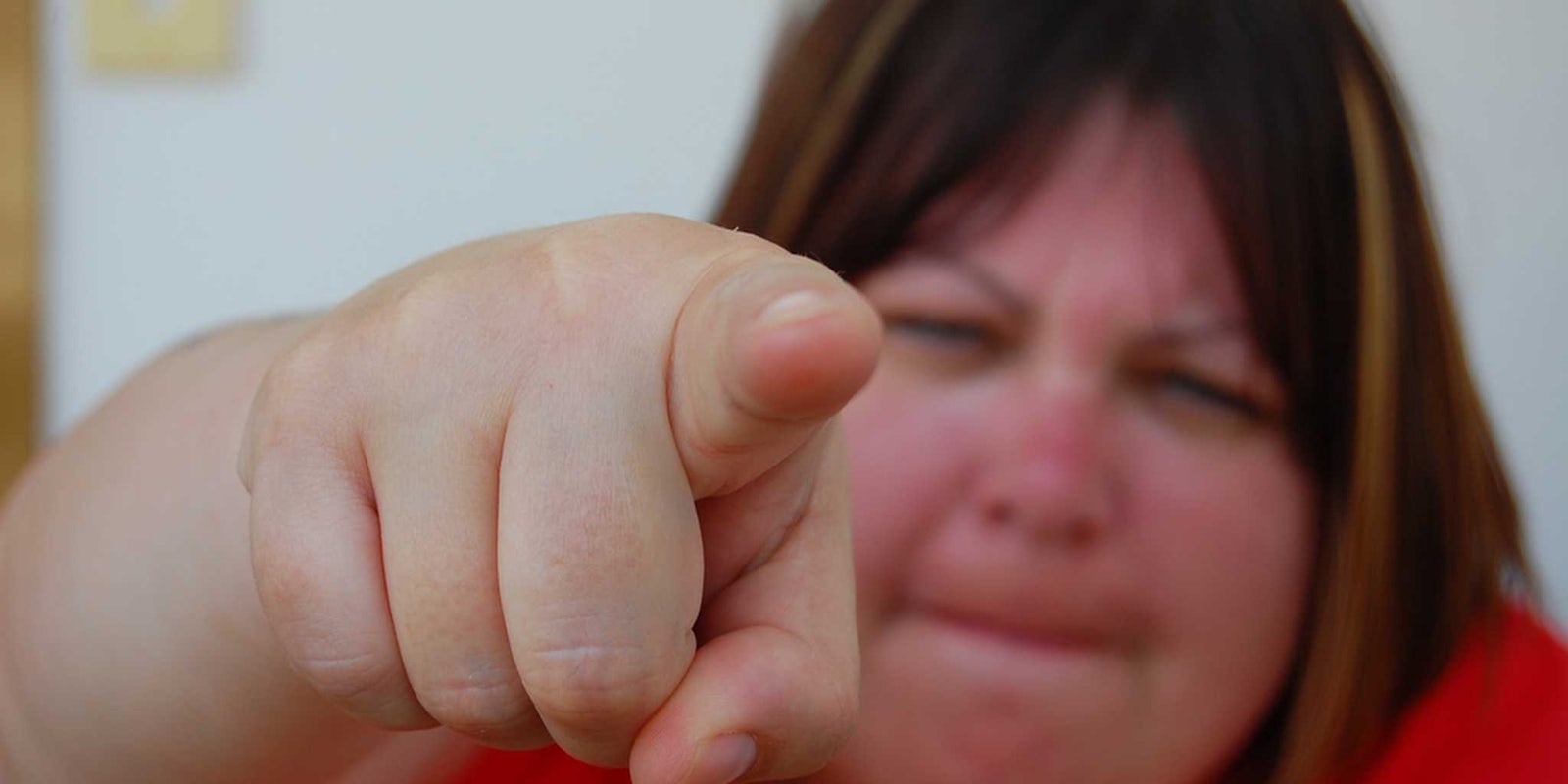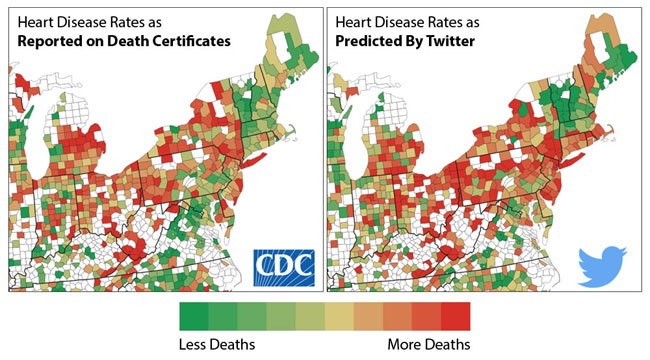Twitter isn’t just for keeping up with news and celebrities. A new study shows that by analyzing groups of 140-character tweets, scientists can actually illustrate rates of health issues around the country, particularly heart disease.
A study published in Psychological Science described how researchers analyzed tweets from various counties across the U.S., and discovered that language used in tweets can help identify high-risk areas for heart disease.
Furthermore, Twitter can identify and predict areas of heart disease better than more traditional factors combined, including behaviors like smoking and stress. This is Twitter data illustrates the psychological atmosphere of particular areas.
Areas with tweets containing negative content correlated to areas where there were higher risks for heart disease, while positive tweets correlated to lower risk.
The findings show that expressions of negative emotions such as anger, stress, and fatigue in the tweets from people in a given county were associated with higher heart disease risk in that county. On the other hand, expressions of positive emotions like excitement and optimism were associated with lower risk.
The results suggest that using Twitter as a window into a community’s collective mental state may provide a useful tool in epidemiology.
There is extensive research on how our feelings and psychological well-being impact the health of our bodies, especially in regards to cardiovascular disease. Studies show that negative feelings, like depression or anger, or people who feel “restricted in social interactions” and don’t express those feelings to other individuals, can be at an increased risk for cardiac events.
To illustrate this, researchers from the University of Pennsylvania used publicly available data from Twitter users who enabled location sharing. They collected tweets between 2009 and 2010, and selected random sample tweets to analyze the emotions of the conversation using “established emotional dictionaries.”
Words like “hate” or swear words were identified as negative emotions, and researchers found that even after certain variables like income and education were taken into account, areas with more negative tweets correlated to those with greater risk of heart disease. The opposite occurred in areas where optimistic tweets, like those including “wonderful” or “friends,” were more common.
The scientists analyzed tweets and health data from 1,300 U.S. counties containing 88 percent of the national population.
This isn’t the first time Twitter has been used for health or psychological analysis. Because it’s a global service that’s inherently public, researchers can use the data provided by users to better understand how things impact our offline lives.
One study looked at Twitter to determine influenza rates in the U.S., as well as track illnesses and geographic location overtime to discern patterns in allergies, obesity, and insomnia.
Scientists can also analyze language patterns in different parts of the world that speak the same language to find patterns. Researchers discovered two Spanish “superdialects” by analyzing the tweets from Spanish-speaking countries around the world to figure out how the language differs in urban and rural communities.
The University of Pennsylvania study doesn’t determine whether you will die of heart disease simply because you tweet about how much you hate things. Still, it does provide interesting data to the psychological health of communities overall.
“We believe that we are picking up more long-term characteristics of communities,” Lyle Ungar, coauthor of the study said. “The language may represent the ‘drying out of the wood’ rather than the ‘spark’ that immediately leads to mortality. We can’t predict the number of heart attacks a county will have in a given timeframe, but the language may reveal places to intervene.”
Photo by eVo Photo/Flickr (CC BY-SA 2.0)



